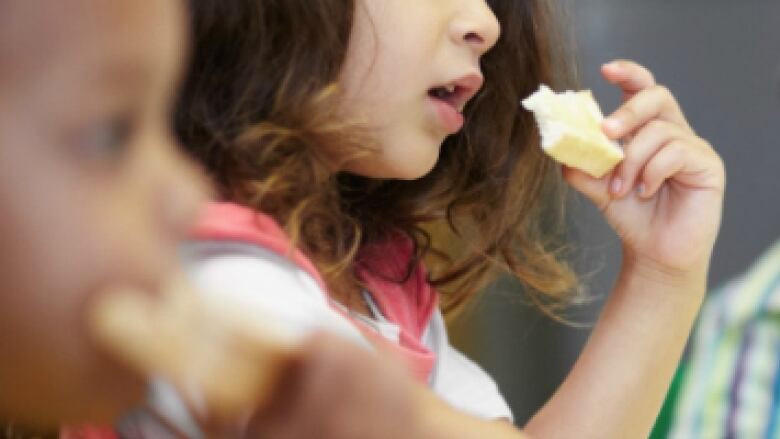In Bill Morneau's riding, 40% of children live in poverty, report says
Campaign 2000 compared child poverty rates in each of the 338 federal ridings

Four in every 10 children residing in Finance Minister Bill Morneau's downtown Toronto riding live in poverty, one of the highest rates identified in a new report tracking child poverty rates across all 338 federal ridings.
The Liberals have promised to create a poverty reduction strategy before the end of this four-year mandate.

The downtown Toronto riding is home to a large number of visible minorities and recent immigrants, many of whom live in social housing, the report says. But it only falls fourth on the group's ranking of worst child poverty rates.
Almost 2/3 of kids in Manitoba riding live in poverty
The report being released Monday says ridings with high child poverty rates like Toronto Centre also had higher proportions of lone parent families and Indigenous people, such as the Saskatchewan riding of Desnethe-Missinippi-Churchill River and Winnipeg Centre, which ranked second and third, respectively, for the highest child poverty rates in the country.
The northern Manitoba riding of Churchill-Keewatinook Aski, a predominantly rural riding home to multiple First Nations, had a child poverty rate of 64.2 per cent, the highest in the country. That's more than three-and-a-half times the national average recorded in the most recent census.
"We might hear from some politicians that, 'this is not an issue in my backyard' and that really poverty is about either getting a job, or pulling up your bootstraps and it's because of people's individual choices. This really shows that there are systemic factors at play," said Anita Khanna, national co-ordinator of Campaign 2000.
Data released by the group show about 18 per cent of children in ridings held by the federal Liberals live in poverty. About 29 per cent of children live in poverty in Prime Minister Justin Trudeau's riding of Papineau, and 26.6 per cent in Heritage Minister Mélanie Joly's riding of Ahuntsic-Cartierville.
NDP-held ridings have child poverty rates of on average 22 per cent, while the figure is about 15 per cent for Conservative ridings.
The latest census found that 17 per cent of children 17 and under lived in low-income households, or about 1.2 million children overall.
Anti-poverty group calls for 'dignity dividend'
Campaign 2000 is calling on the Liberals to set a target of cutting child poverty in half over the next five years, and boost the base amount of the Canada Child Benefit, the means-tested payments Social Development Minister Jean-Yves Duclos will tout in a press conference on Monday.
The group is also calling for the creation of a federal "dignity dividend" of $1,800 per adult and child who live below the poverty line, which would be like a top-up to the GST credit and could help lift hundreds of thousands out of poverty.
"Child poverty is an issue that affects all communities and therefore all MPs and all political parties should be working towards its eradication," Khanna said.
"This is an issue that is affecting people in their ridings and they have a stake in the strength of the strategy."
Ridings ranked according to child poverty
The anti-poverty group broke down the child poverty rates in each of the 338 federal ridings. Below are the 10 ridings with the highest, and lowest child poverty rates in the country as calculated by Campaign 2000, which advocates for an end to child poverty in Canada, as well as the province and party that represents the riding in Parliament.
Top 10 ridings for child poverty rates:
- Churchill—Keewatinook Aski, Manitoba (NDP): 64.2
- Desnethe—Missinippi—Churchill River, Saskatchewan (NDP): 57.8
- Winnipeg Centre, Manitoba (Liberal): 41.1
- Toronto Centre, Ontario (Liberal): 40
- Ville-Marie—Le Sud-Ouest—Ile-des-Soeurs, Quebec (Liberal): 38.1
- Nunavut (Independent): 36.1
- Kenora, Ontario (Liberal): 34.7
- Hamilton Centre, Ontario (NDP): 34.2
- Dauphin—Swan River-Neepawa, Manitoba (Conservative): 33.8
- Sydney—Victoria, Nova Scotia (Liberal): 33.0
Bottom 10 ridings for child poverty rates:
- Lévis-Lotbinière, Quebec (Conservative): 4.1
- Montarville, Quebec (Liberal): 4.1
- Portneuf—Jacques-Cartier, Quebec (Conservative): 4.5
- Pierre-Boucher—Les Patriotes-Verchères, Quebec (Bloc Québécois): 4.7
- Beloeil-Chambly, Quebec (NDP): 5.6
- Beauport—Côte-de-Beaupré—Ile d'Orléans-Charlevoix, Quebec (Conservative): 5.8
- Carleton, Ontario (Conservative): 5.9
- Louis-Saint-Laurent, Quebec (Conservative): 6.3
- Charlesbourg—Haute-Saint-Charles, Quebec (Conservative): 6.3
- Vaudreuil—Soulanges, Quebec (Liberal): 6.3